-
 The Leica CLS LED light source has been developed for routine and high-end microscopy applications. It is compatible with all fiber-optic light guides of the LED series.
The Leica CLS LED light source has been developed for routine and high-end microscopy applications. It is compatible with all fiber-optic light guides of the LED series. -
 With the TL5000 Ergo you can manage and control all base settings via software for maximum control, whatever your project. Manual push buttons on the base allow cycling through the different contrasts
With the TL5000 Ergo you can manage and control all base settings via software for maximum control, whatever your project. Manual push buttons on the base allow cycling through the different contrasts -
 TL3000 Ergo from Leica stands for intuitive manual operation. Effortlessly pass through the different contrast options: brightfield, Rottermann contrast, or one-sided darkfield. Fine-tuning of the contrast is easy, and all with just a single knob.
TL3000 Ergo from Leica stands for intuitive manual operation. Effortlessly pass through the different contrast options: brightfield, Rottermann contrast, or one-sided darkfield. Fine-tuning of the contrast is easy, and all with just a single knob. -
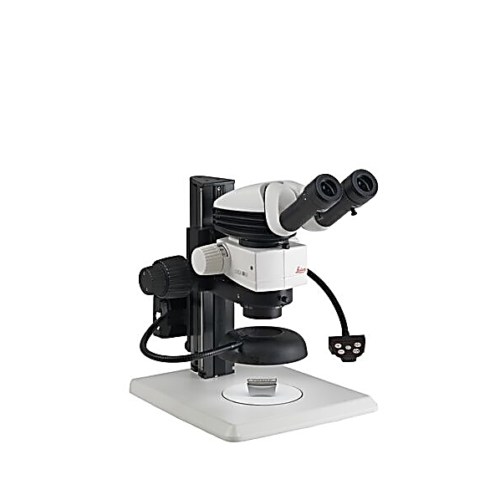 Diffused illumination gives uniform illumination without shadow and glare effects. The Leica LED3000 DI and LED5000 HDI are ideal for documenting samples that are difficult to illuminate using other methods.
Diffused illumination gives uniform illumination without shadow and glare effects. The Leica LED3000 DI and LED5000 HDI are ideal for documenting samples that are difficult to illuminate using other methods. -
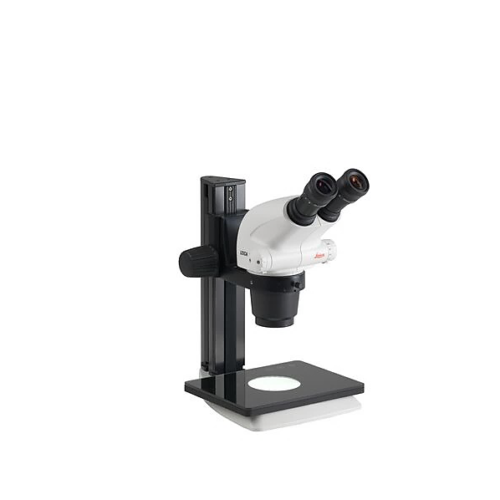 For transmitted light applications. The Leica LED3000 BLI makes it easy to equip a microscope system with transmitted light. The illuminator can be combined with standard baseplates or even used as a standalone instrument.
For transmitted light applications. The Leica LED3000 BLI makes it easy to equip a microscope system with transmitted light. The illuminator can be combined with standard baseplates or even used as a standalone instrument. -
 The Leica LED5000 CXI coaxial illuminator is used for quality control of flat, polished, or reflective samples. Scratches, cracks, impurities, and pores are made exceptionally visible. With coaxial illumination, light is coupled directly into a beam path and reflected into another beam path by the flat sample.
The Leica LED5000 CXI coaxial illuminator is used for quality control of flat, polished, or reflective samples. Scratches, cracks, impurities, and pores are made exceptionally visible. With coaxial illumination, light is coupled directly into a beam path and reflected into another beam path by the flat sample. -
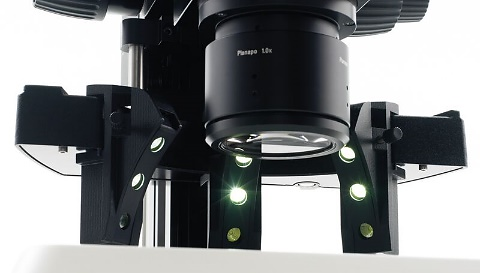 The unique Leica MCI (Multi Contrast Illumination) systems are ideal for applications that previously required goosenecks. The flat angle of the oblique incident light creates particularly high contrast for precise viewing of even the smallest uneven surfaces and defects such as scratches and dust particles.
The unique Leica MCI (Multi Contrast Illumination) systems are ideal for applications that previously required goosenecks. The flat angle of the oblique incident light creates particularly high contrast for precise viewing of even the smallest uneven surfaces and defects such as scratches and dust particles. -
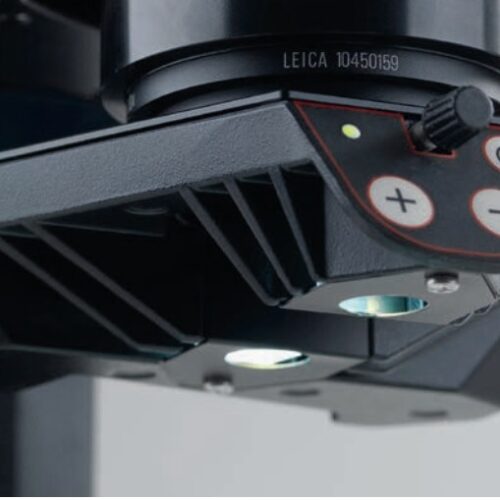 The Leica LED3000 NVI is ideal for viewing recesses and holes, since the light falls almost vertically on the sample. In contrast to coaxial illumination it is also ideally suited for non-reflective and uneven sample Surface. NVI illumination shines almost straight down onto the sample plane. This allows cavities and recesses to be very well illuminated. The Leica NVI is installed between the microscope carrier and the objectives
The Leica LED3000 NVI is ideal for viewing recesses and holes, since the light falls almost vertically on the sample. In contrast to coaxial illumination it is also ideally suited for non-reflective and uneven sample Surface. NVI illumination shines almost straight down onto the sample plane. This allows cavities and recesses to be very well illuminated. The Leica NVI is installed between the microscope carrier and the objectives -
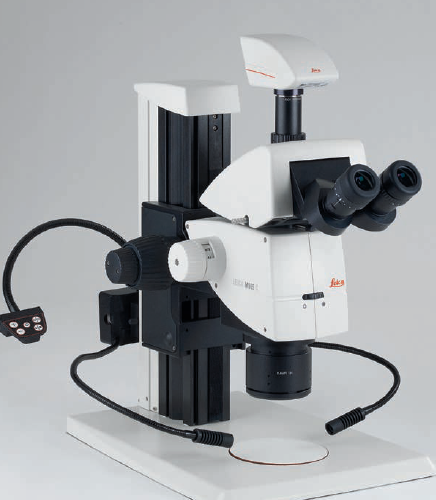 The Leica LED3000 SLI and Leica LED5000 SLI each feature two bright LED spotlights, which can be individually adjusted to the sample with two goosenecks. The control element is mounted on a separate gooseneck and can be placed in any position.
The Leica LED3000 SLI and Leica LED5000 SLI each feature two bright LED spotlights, which can be individually adjusted to the sample with two goosenecks. The control element is mounted on a separate gooseneck and can be placed in any position. -
 The light is arranged in a ring around the objective and shines down onto the sample. Illuminate from defined segments or uniformly, depending on the properties of the sample
The light is arranged in a ring around the objective and shines down onto the sample. Illuminate from defined segments or uniformly, depending on the properties of the sample -
 The Leica LED5000 / Leica LED3000 family is also fully integrated into the complete system of stereomicroscopes and accessories from Leica Microsystems Focusing columns with integrated electronics connect all digital signals and send them to Leica Application Suite
The Leica LED5000 / Leica LED3000 family is also fully integrated into the complete system of stereomicroscopes and accessories from Leica Microsystems Focusing columns with integrated electronics connect all digital signals and send them to Leica Application Suite -
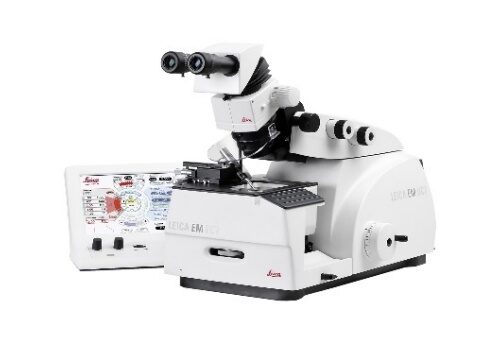 The Leica EM UC7 prepares excellent quality semi- and ultra-thin sections, as well as the perfectly smooth surfaces required for LM, TEM, SEM, and AFM examination. The precision mechanics, ergonomic design, and intuitive layout of the touchscreen control unit make the Leica EM UC7 ideal for the highest quality specimen preparation
The Leica EM UC7 prepares excellent quality semi- and ultra-thin sections, as well as the perfectly smooth surfaces required for LM, TEM, SEM, and AFM examination. The precision mechanics, ergonomic design, and intuitive layout of the touchscreen control unit make the Leica EM UC7 ideal for the highest quality specimen preparation -
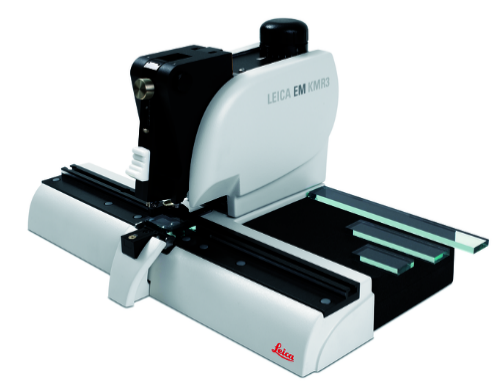 The balanced break method of the Leica EM KMR3 ensures perfect glass knives in three thicknesses 6,4 mm, 8 mm, and 10 mm.
The balanced break method of the Leica EM KMR3 ensures perfect glass knives in three thicknesses 6,4 mm, 8 mm, and 10 mm. -
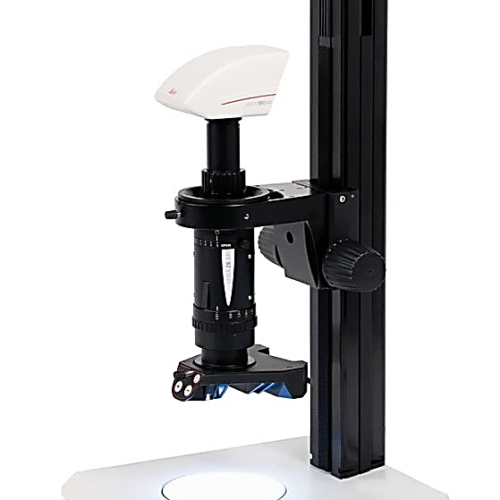 Manual 6:1 Macroscope for detailed Documentation, Measurement and Evaluation. The Leica Z6 APO is a fully apochromatic zoom system with excellent light transmission for high contrast, high-resolution, detailed analysis. The single beam path provides 2D images and ensures parallax-free imaging. the Leica Z6 APO with 6.3:1 zoom offers the highest numerical aperture: 0.117 nA (351 Lp/mm resolution) with the 1× plan-apochromatic objective
Manual 6:1 Macroscope for detailed Documentation, Measurement and Evaluation. The Leica Z6 APO is a fully apochromatic zoom system with excellent light transmission for high contrast, high-resolution, detailed analysis. The single beam path provides 2D images and ensures parallax-free imaging. the Leica Z6 APO with 6.3:1 zoom offers the highest numerical aperture: 0.117 nA (351 Lp/mm resolution) with the 1× plan-apochromatic objective -
 Do you have to perform a wide variety of tasks but don’t want to constantly change the objective or even switch the microscope? Offering a large zoom and magnification range the Leica M165 C allows you manage all different kind of samples.
Do you have to perform a wide variety of tasks but don’t want to constantly change the objective or even switch the microscope? Offering a large zoom and magnification range the Leica M165 C allows you manage all different kind of samples. -
 With a coded zoom and apochromatic optics, the Leica M125 C offers high-end quality for mid-range budgets. Combining optimal resolution and depth of field with the integrated double iris diaphragm.
With a coded zoom and apochromatic optics, the Leica M125 C offers high-end quality for mid-range budgets. Combining optimal resolution and depth of field with the integrated double iris diaphragm. -
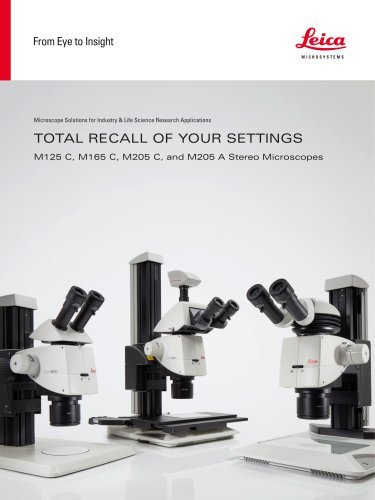 With a Leica M-series stereo microscope you can choose from a comprehensive range of accessories to adapt your microscope to your application Our goal: high-quality images that allow measurements and can be accurately repeated with minimal effort. The Leica coded stereo microscopes help you to pave the way to correct results.
With a Leica M-series stereo microscope you can choose from a comprehensive range of accessories to adapt your microscope to your application Our goal: high-quality images that allow measurements and can be accurately repeated with minimal effort. The Leica coded stereo microscopes help you to pave the way to correct results. -
 M80 with 8:1-zoom range, with a continuous zoom from 7.5x – 60x including engageable click stops – expanding your insights and reliability. Optimized for higher magnification to see smaller details in perfect contrast. The large working distance and brilliant imaging power show the finest details of your specimens without losing the field of view over large specimens
M80 with 8:1-zoom range, with a continuous zoom from 7.5x – 60x including engageable click stops – expanding your insights and reliability. Optimized for higher magnification to see smaller details in perfect contrast. The large working distance and brilliant imaging power show the finest details of your specimens without losing the field of view over large specimens -
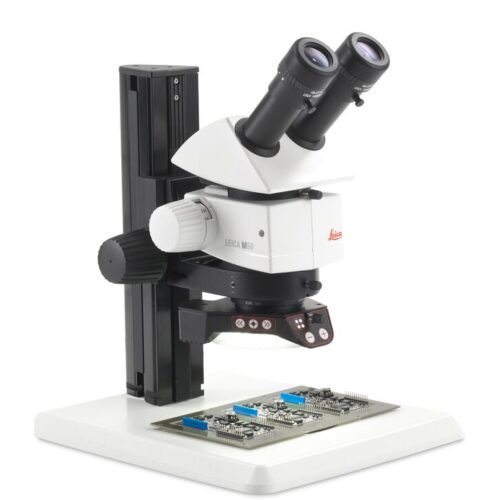 M60 with 6:1-zoom range, with a continuous zoom from 6.3x – 40x including engageable click stops - making repetitive inspection and measurement at a specific zoom position reliable. This system is optimized for a larger field of view to see more at a glance.
M60 with 6:1-zoom range, with a continuous zoom from 6.3x – 40x including engageable click stops - making repetitive inspection and measurement at a specific zoom position reliable. This system is optimized for a larger field of view to see more at a glance. -
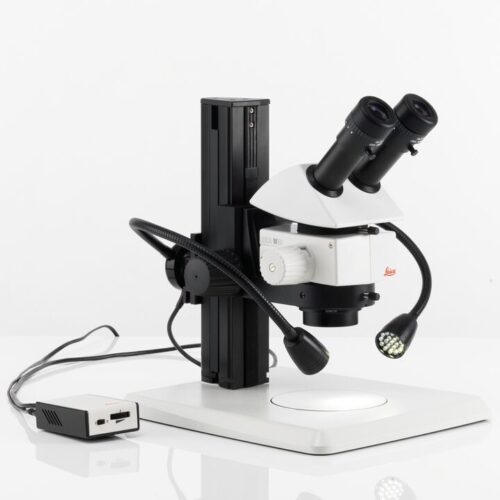 with 5:1-zoom, featuring a step-zoom with five fixed zoom steps, at 6.3x, 10x, 16x, 25x, and 40x– allowing 100% reproducible results, this ensures that the results remain comparable at all times without great effort. The short optics carrier enables high light throughput and provides a large working distance, ideal in animal surgery and similar applications.
with 5:1-zoom, featuring a step-zoom with five fixed zoom steps, at 6.3x, 10x, 16x, 25x, and 40x– allowing 100% reproducible results, this ensures that the results remain comparable at all times without great effort. The short optics carrier enables high light throughput and provides a large working distance, ideal in animal surgery and similar applications. -
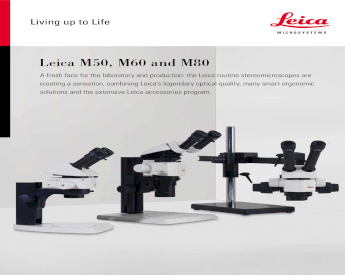 The M50, M60, and M80 allow operators to see a large sample overview, work comfortably under the microscope, and capture images of important details easily.
The M50, M60, and M80 allow operators to see a large sample overview, work comfortably under the microscope, and capture images of important details easily. -
 The S9 D gives you the flexibility to add a camera to the microscope and turn it into a digital microscope solution. The built in 50:50 split of the beam path allows observation through the eyepieces and digital imaging at the same time.
The S9 D gives you the flexibility to add a camera to the microscope and turn it into a digital microscope solution. The built in 50:50 split of the beam path allows observation through the eyepieces and digital imaging at the same time. -
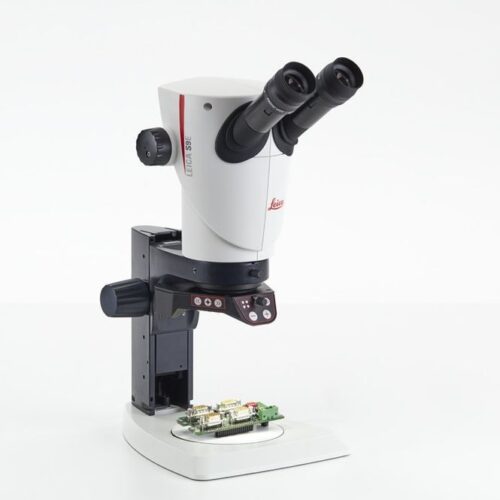 For analog microscope inspections the S9 E is an indispensable asset. It provides a cost-effective solution with fast return on investment.
For analog microscope inspections the S9 E is an indispensable asset. It provides a cost-effective solution with fast return on investment. -
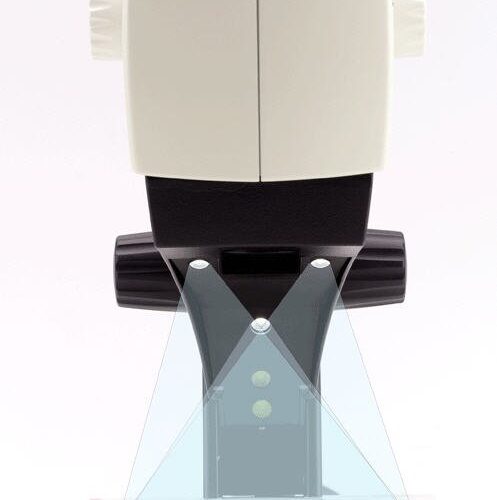 The Leica EZ4 educational stereomicroscope with 4.4:1 zoom for entry level university and college courses such as biology, anatomy and chemistry provides over 20 years of bright LED illumination which saves time and cost of replacement bulbs.
The Leica EZ4 educational stereomicroscope with 4.4:1 zoom for entry level university and college courses such as biology, anatomy and chemistry provides over 20 years of bright LED illumination which saves time and cost of replacement bulbs.
